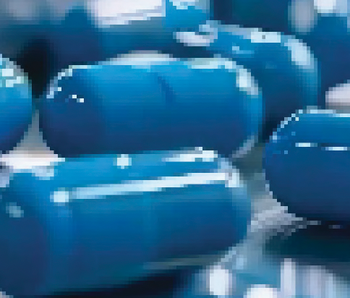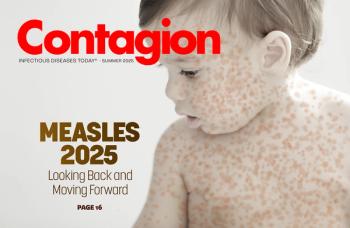
- August 2020
- Volume 5
- Issue 4
Reappraisal of Multiple-Dose Fosfomycin: More Answers and Still More Questions
Stephanie Witek, PharmD
Fosfomycin tromethamine is an oral antibiotic commonly used for the treatment of
A particular area of ambiguity is around the use of multiple-dose fosfomycin (MDF) for complicated UTIs. MDF dosing schemes vary widely based on provider preference, but generally one is composed of 2 or more fosfomycin doses spaced every 48 to 72 hours based on pharmacokinetic data demonstrating sustained serum levels.2 Other remaining questions include patient and infection characteristics, off-label pathogen treatment, and treatment outcomes. To further elucidate, Derington and colleagues conducted a retrospective study, the largest to date, on the utility and outcomes of MDF regimens in the outpatient treatment of complicated UTIs.3
Patients were included if they were dispensed more than 1 fosfomycin sachet for treatment of a complicated UTI and had had at least 1 UTI within the prior 180 days. The definition of “complicated UTI” was not provided. A patient was eligible to contribute more than 1 UTI episode provided the time lapse between episodes was more than 90 days. Relevant exclusion criteria included chart documentation suggesting noncompliance (ie, took <1 dose) and lack of UTI assessment data. Urine culture data, when available, were collected for susceptibility analysis, and they were excluded if they had insignificant or irrelevant bacterial growth. The primary outcome of interest was the rate of clinical resolution within 30 days of MDF dispensing. The secondary outcome, in patients with urine cultures in a 30-day window prior to and after MDF dispensing, was the rate of bacteriologic resolution within the same timeframe.
Overall, 147 patients and 171 distinct treatment episodes were included for analysis. Patients receiving MDF were predominantly females (77.6%) with a mean age of 72 years. While the most common comorbidities included hypertension (57.8%) and chronic kidney disease (41.5%), only 1 patient (0.6%) with urologic disease requiring a stent or implant was included. The most common MDF regimen was 1 sachet every 3 days (72.5%) for an average duration of 6.1 days. The most frequently isolated organism was E. coli (63%), which had a high rate of nonsusceptibility to common antibiotics such as cephalosporins and fluoroquinolones.
Clinical resolution was achieved in 66.1% of patients, while bacteriologic resolution occurred in only 48.7%. The results of these outcomes differed depending on the organism isolated. Further details are summarized in the Table. It is worth noting that while bacteriologic resolution occurred in less than half of patients, only a minority of cases had both pre- and posttreatment cultures within the predefined timeframe to assess this outcome.
While this study supports a modest degree of efficacy with MDF and certainly adds to the limited amount of literature, many questions remain unanswered. Several factors may be impacting results of this study, including differences in the definition of a “complicated” UTI, use of fosfomycin without known susceptibilities, as well as differences in end points. While clinical resolution rates in this study are lower than those reported in prior MDF studies,4,5 rates of failure differed depending on the organism isolated, perhaps to a degree attributable to use of fosfomycin outside of its FDA-approved organisms.
The findings of this descriptive study will hopefully lead to further prospective work to answer the remaining questions about MDF and its place in therapy. We remain hopeful that oral fosfomycin will become a reliable treatment option for these complicated infections that might otherwise necessitate intravenous therapy.
Table. Summary of Clinical and Bacteriologic Outcomes by Organism
Clinical Resolution, n (%)
[95% CI]
Bacteriologic Resolution, n (%)
[95% CI]
Organism
113/171 (66.1%)
[59.7%-74.2%]
37/76 (48.7%)
[37.0%-67.4%]
Escherichia coli
76/101 (75.2%)
[65.7%-83.3%]
20/38 (52.6%)
[35.8%-69.0%]
Klebsiella spp.
11/15 (73.3%)
[44.9%-92.2%]
7/11 (63.6%)
[30.8%-89.1%]
Enterococcus spp.
8/13 (61.5%)
[31.6%-86.1%]
4/4 (100%)
[39.7%-100%]
Pseudomonas spp.
10/12 (83.3%)
[51.6%-97.9%]
0/9 (0%)
[0%-33.6%]
ESBL E. coli
5/8 (62.5%)
[24.5%-91.5%]
1/3 (33.3%)
[0.8%-90.6%]
Citrobacter spp.
1/5 (20%)
[0.5%-71.6%]
2/4 (50%)
[6.8%-93.2%]
Proteus spp.
1/4 (25%)
[0.6%-80.6%]
0/1 (0%)
[0%-97.5%]
ESBL, extended-spectrum beta lactamase.
References
- Monural (Fosfomycin). Prescription information. Allergan USA; 2019. Accessed April 29, 2020. https://www.monurol.com
- Bergan T, Thorsteinsson SB, Albini E. Pharmacokinetic profile of fosfomycin trometamol. Chemotherapy. 1993;39(5):297-301. doi:10.1159/000239140
- Derington CG, Benavides N, Delate T, Fish DN. Multiple-dose oral fosfomycin for treatment of complicated urinary tract infections in the outpatient setting. Open Forum Infect Dis. 2020;7(2):ofaa034. doi:10.1093/ofid/ofaa034
- Giancola SE, Mahoney MV, Hogan MD, et al. Assessment of fosfomycin for complicated or multidrug-resistant urinary tract infections: patient characteristics and outcomes. Chemotherapy. 2017;62(2):100-10 doi:10.1159/000449422
- Babiker A, Clarke L, Doi Y, Shields RK. Fosfomycin for treatment of multidrug-resistant pathogens causing urinary tract infection: a real-world perspective and review of the literature. Diagn Microbiol Infect Dis. 2019;95(3):114856. doi:10.1016/j.diagmicrobio.2019.06.008
Articles in this issue
about 5 years ago
Intravenous Fosfomycin for Systemic Multidrug-Resistant Infectionsabout 5 years ago
Antiretroviral Stewardship: The Time is Nowabout 5 years ago
Using IL-6 Inhibitors to Treat COVID-19about 5 years ago
Hydroxychloroquine for COVID-19: A Lesson in Study QualityNewsletter
Stay ahead of emerging infectious disease threats with expert insights and breaking research. Subscribe now to get updates delivered straight to your inbox.

































































































































































































































































































